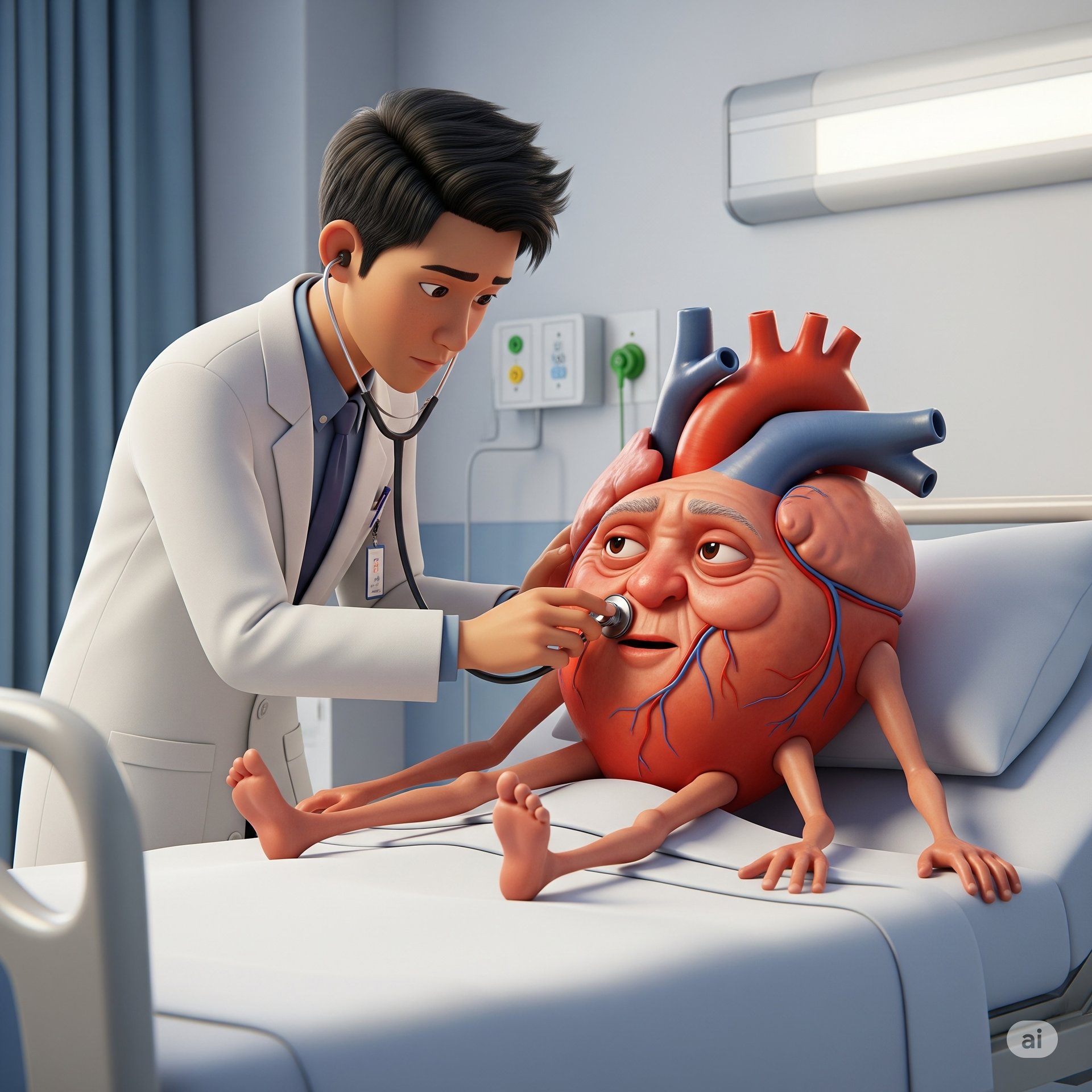THEMEDPRACTICALEXAM.COM

Cardiovascular System Examination: Inspection
I. General Inspection
Patient position: Supine or at a 45-degree inclination.
Exposure: Well-exposed from waist upwards for optimal visualization.
Chest Wall Configuration
1. Shape of the Precordium
Normal: Precordium appears flat and smooth.
Bulging: Precordial bulge may indicate long-standing cardiomegaly, often from childhood.
Retraction: Sternal retraction with each heartbeat suggests pericardial adhesion or right ventricular hypertrophy.
2. Symmetry of Chest
Symmetrical: Chest appears even on both sides.
Asymmetrical: Note any deformities, such as:
Pectus excavatum: Sunken sternum.
Pectus carinatum: Protruding sternum.
Kyphosis: Excessive curvature of the thoracic spine.
Scoliosis: Lateral curvature of the spine.
These abnormalities can affect the heart's position and the accuracy of clinical findings.
Visible Pulsations
1. Apex Impulse
Visible / Not visible.
If visible, describe location (e.g., left 5th intercostal space, midclavicular line).
Character: tapping, forceful, or heaving.
2. Other Precordial Pulsations
Left parasternal: Suggests right ventricular hypertrophy.
Left 2nd Intercostal Space: Pulmonary artery dilatation.
Right 2nd Intercostal Space: Aortic aneurysm or dilated ascending aorta.
Suprasternal notch: Aortic aneurysm or unfolding aorta.
Epigastric area: Right ventricular hypertrophy or aortic aneurysm.
Other locations: Specify if additional pulsations are seen, along with their timing (systolic/diastolic).
Scars, Sinuses, Dilated Veins
1. Scars
Present / Absent
Median sternotomy scar: Indicates previous cardiac surgery (e.g. valve replacement, CABG).
Left thoracotomy scar: May result from PDA ligation or coarctation repair.
2. Sinuses
Present / Absent
Look for any discharging sinuses on the chest wall.
3. Dilated Veins on Chest Wall
Present / Absent
If present, note the direction of blood flow.
Downward flow may suggest superior vena cava (SVC) obstruction.